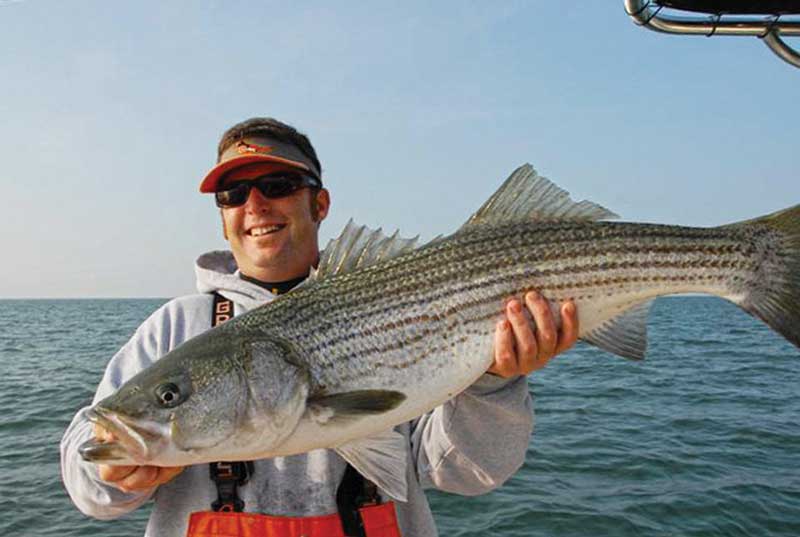Rockfish are the center of attention in Maryland and Virginia, as well as most other states along the Atlantic Coast from Maine to North Carolina, as managers try to come up with regulations that will restore the breeding stock biomass without destroying the industry that depends on these fish. It will be a slow fall season for catching big rockfish as the remains of the ocean run breeding stock makes it way from New England to North Carolina. Those who plan to try for a true trophy will have to spend time on the water and plan their trips at the whim of the fish that may or may not coincide with the realities of daily life.

The internet is a great help in keeping track of the progress of the traveling rockfish. I have Facebook friends from Maine to North Carolina, and they keep me well informed as to where the rockfish are at any time. Once they come in range of my small boat or along my stretch of beach, it is time to take action.
The first location within my range will be the rips between Cape May and Cape Henlopen. Anglers may gain access from the boat ramp at Lewes or Indian River Inlet in Delaware. The Lewes ramp is closer to the rips, and you don’t have to worry about running Indian River Inlet on outgoing water.
Once on the rips, you have several choices of attack. Trolling is the most popular technique with Mann’s Stretch 25 or 30 plugs, Huntington Drone 4-1/2 spoons, Maja Bunker spoons, and MOJO rigs all employed with success.
The trolling pattern is to run parallel to the standing waves and allow the lure to be carried by the current over the rip to the fish waiting on the down-current side. The captain will set the boat with the stern angled towards the rip to aid this process. This may take a little practice to get the correct angle and speed to present the lures properly. Most trailer boats will run no more than three, and many only run two lines.
Live eels are the next choice when targeting ocean run rockfish at the rips. These are used in the deep water of the Valley next to the Eights or may be drifted across the rips. Eels are best used during a hard-running current. Once the current slows, dog sharks come out to play.
As the rockfish move south, trolling along the beach becomes a search for diving birds. Gannets can show up anywhere from Cape Henlopen to Cape Charles and will indicate schools of bunker or sand eels.
Now is when it pays to have friends on the water to communicate with when diving birds are located. Since rockfish may only be targeted inside the Three-Mile-Limit, cell phones should work eliminating the need to broadcast information on the VHF radio.
My trolling set up has two lines carrying either Stretch plugs or Drone spoons. The plugs will be on braided line and the spoons will be on wire line. As the day progresses, I will switch around using MOJOs and Maja bunker spoons. I also have at least two spinning rods rigged and ready with large bucktails in case a situation arises where I can cast to breaking fish.
When working a school of feeding rockfish, try running just outside the main body of fish. If trolling doesn’t produce, move upwind and cast to the school. You can drift down to the fish without spooking them. Of course, there will always be some idiot who will run right into the fish and drive them away. When this happens, look at your SONAR. If you still see marks on or close to the bottom, break out the metal jigs and drop them down to those fish.
Then comes the really hard part—releasing the fish of a lifetime. That big female that you just caught is the future of the fishery. If you kill her just to show her off at the dock or have your photo taken, you are depriving future fishermen a chance to see a recovered stock. Take a photo while the fish is still in the water and then remove the hook and let her swim away. It is a good idea to crush the barbs on your hooks to make this job easier, and even swap out the trebles for single hooks where possible. Catch and release; it’s a good thing.
By Eric Burnley
Looking for more fishing tips and tricks? Check out our Fishing page, and also be sure to check out our sister publication dedicated solely to fishing: FishTalk Magazine.